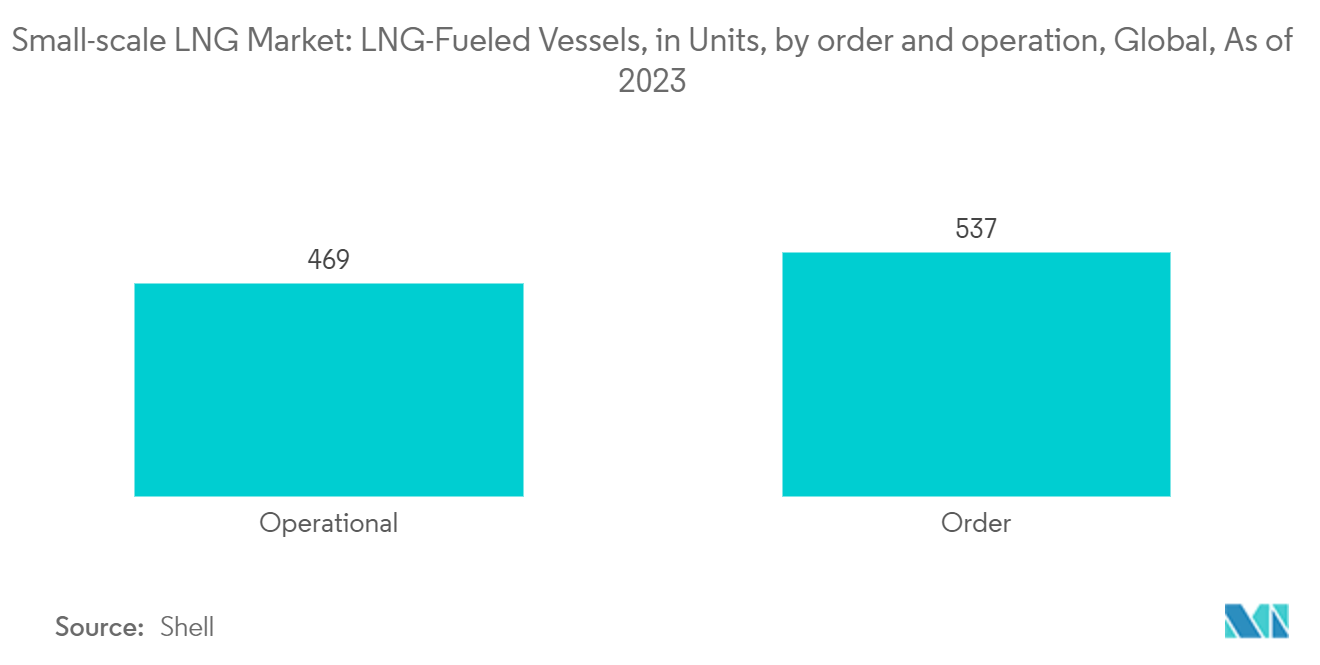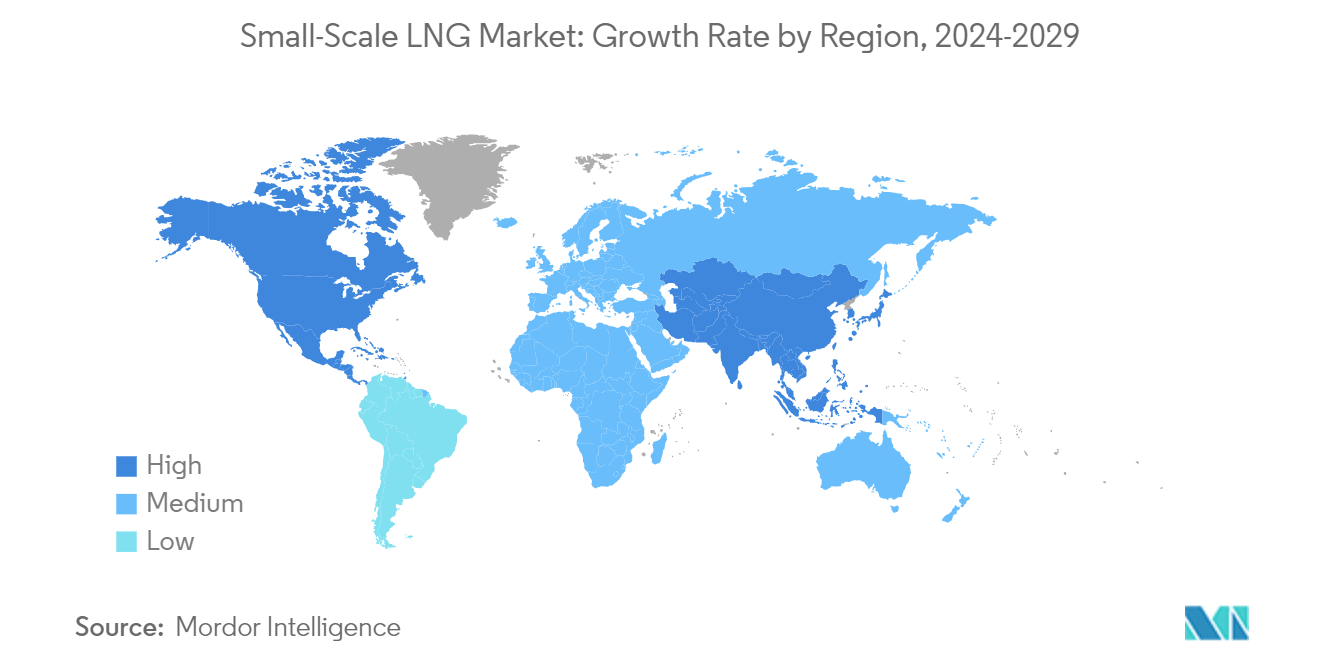Market Trends of Small-scale LNG Industry
The Transportation Segment Expected to Dominate the Market
- LNG is primarily used to fuel trucks and ships, mainly due to its economic and environmental benefits, compared to diesel and fuel oil. Since LNG is non-corrosive and non-toxic, it can extend the life of a vehicle by up to three times. Moreover, since LNG has an extremely low boiling point, very little heat is required to convert it into a gaseous form at high pressure, with negligible mechanical energy. This makes LNG an efficient fuel for transportation.
- Handling LNG is an immense task since even a slight difference in the temperature can lead to the boiling and vaporization of fuel, which, in turn, leads to fuel wastage. Therefore, it makes passenger cars far less viable than heavy vehicles, such as commercial trucks. This has limited the application of LNG in the transportation segment.
- The use of LNG as a transportation fuel is gaining momentum across the world. China, the United States, and Europe have already started deploying LNG-powered trucks, mainly for long-distance freight carriage. This is mainly due to the government policies and regulations on decarbonizing and emission control, such as China VI and the European Green Deal.
- Formed in 2019 by the European Commission, the European Green Deal is a set of policy initiatives to make Europe carbon-neutral by 2050. The policies briefly underline the importance of LNG in reaching the aim, and they emphasize the usage of LNG as fuel for trucks and marine vessels.
- According to Shell LNG Outlook 2024, as of 2023, there were 469 LNG-fueled vessels in operation, and 537 LNG-fueled vessels were on order. The rapidly growing order book for LNG-fuelled vessels has witnessed rapid growth compared to previous years, and increasing numbers of ship owners and operators understand LNG's environmental and climate benefits.
- New emerging economies are also planning to lay the foundation for the future of LNG for transportation. For instance, in March 2024, Venture Global LNG started the construction of a new large fleet of LNG-powered vessels. The fleet includes nine vessels (Six vessels having a cargo capacity of 174,000 m3 and three with a cargo capacity of 200,000 m3) currently under construction in South Korea.
- Hence, owing to the above-mentioned factors, the demand for small-scale LNG infrastructure for the transportation segment will likely grow and significantly dominate the market during the forecast period.

Asia-Pacific to Dominate the Market
- In recent years, Asia-Pacific has been a pioneer in implementing small-scale LNG projects globally. Interest in using small-scale LNG (SSLNG) has increased in recent years as the demand for natural gas increases in countries like China, India, Singapore, and Japan.
- China is one of the world's major countries, which led to the growth in LNG demand. LNG imports totaled around 64.4 million tons in 2022. Due to this surge in demand, China became one of the world's largest LNG importers. The increased demand is due to Chinese LNG buyers signing long-term contracts for more than 20 million tons annually.
- China's natural gas market includes domestic production and import via pipelines and LNG terminals. In China, the rising demand for small-scale LNG is from the industrial, residential, and power generation sectors, with the highest potential being in the transportation sector. Growth in the number of LNG trucks due to the higher price of diesel, compared to natural gas, is expected to be the prime reason small LNG facilities are growing in China.
- In India, small-scale LNG is in a very nascent stage. However, there are a few LNG stations where LNG transportation through LNG trucks is taking place. To increase the share of natural gas to 15% in its energy mix by 2030, India will likely construct small-scale LNG facilities for natural gas supply to remote places with no pipeline infrastructure. For instance, in June 2022, GAIL Limited, a government-owned natural gas explorer and producer company, aimed to set up small liquefaction facilities for areas not connected to LNG pipelines.
- In March 2024, the Union Minister of Petroleum and Natural Gas of India launched the country's first small-scale LNG unit set up by GAIL at Vijaipur in Madhya Pradesh.
- The LNG bunkering facilities in the ports of Singapore majorly drive small-scale LNG business in Singapore. Singapore has one of the leading trade ports and is one of the global leaders in international marine shipping.
- Therefore, owing to the above points, Asia-Pacific is expected to dominate the growth of the small-scale market during the forecast period.


